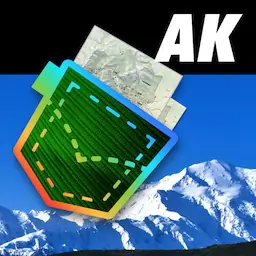Swan Lake FireKenai |
After the Swan Lake Fire at Kenai National Wildlife Refuge (NWR) in Alaska. Published by the U.S. Fish & Wildlife Service (USFWS).
featured in
| Alaska Pocket Maps |  |
After the
SWAN LAKE
Swan Lake Fire
PUBLIC INFORMATION
Hazards, Harvest & Hope
KENAI NATIONAL WILDLIFE REFUGE
in this Mosaic Landscape
Wildfire in Alaska’s forests creates a mosaic of different
landscapes. A visit to the area reveals where the actual
“burned area” is accessible to visitors.
O
AI
PENINS
LA
Regrowth of new plants has already begun within the
Swan Lake Fire scar. The boreal forest restarts through
a process called succession.
Young plants like fireweed and willow will
feed a wide variety of wildlife species while
trees sprout saplings, grow taller and later
restore the forest canopy. Old trees prepare for
fire’s return by growing abundant seeds that
will sprout in the recharged post-fire soils.
Mushrooms like morels are essential to this
forest rebirth, decomposing organic material into new
soil. Downed trees catch this soil and wind-blown
seeds, creating the habitat needed for new plants to
grow and reducing the risk of soil runoff after rains.
U
After the Fire - Swan Lake 2020BRO.indd 1
What Happens Next?
B
Know Before You Go: Learn more about potential
hazards and risks to visitors inside this brochure.
Animals in this fire-adapted ecosystem react to smoke just
as humans do, moving away and seeking shelter in safe
zones like wetlands and lakes. Though some individual
animals may not avoid harm, their species’ population
benefits as a whole from the forest’s rebirth after fire.
H
The map (above) of the 2019 Swan Lake Fire perimeter
does not show the details of its burn scar. The Swan
Lake Fire burned with a variety of intensities over
the four months it was active on the Kenai Peninsula,
burning hot through black spruce stands while
dancing lightly around wetlands.
What about Wildlife?
KE
N
Where is the Burned Area?
R O U G
4/16/20 2:49 PM
Traveling In Forested Areas After A Fire Is Walking On
Dangerous
grounD
Hazard Trees
Ash Pits
Trip Hazards
The duff that held tree roots in place has now been
burned away leaving trees very unstable.
Ash pits may look like solid ground on the surface, but
underneath can be inches to feet deep of smoldering ash.
Duff layer. A layer of moderately to highly decomposed leaves,
needles, fine twigs, and other organic material found between
the mineral soil surface and litter layer of forest soil.
Ash Pit. A hole in the ground filled with ash, possibly containing
hot embers beneath. It may be imperceptible from the ground
above, and can remain dangerous long after flames and smoke are
no longer visible.
Safety
Tips
• Look Up, Down and Around!
• Be aware of your surroundings at
all times.
• Do not walk on trails during
windy days.
• Share your hiking plans with
friends and family.
• Plan your trip! Avoid areas with
hazard trees after storms.
Mushrooms!
After fire, morel mushrooms grow in abundance.
Mushrooms harvested on the Refuge may not be sold.
Please visit the Chugach NF website for information
on harvesting mushrooms of the forest. Closely
inspect each mushroom to ensure it is a true morel.
False morels do grow here too.
After the Fire - Swan Lake 2020BRO.indd 2
Safety
Tips
• Stay on designated trails.
• Keep Pets on trails.
• Do not allow children to play in
burned areas.
• Carry a hiking stick
to check the ground
for ash pits.
True
Morel
• Cap & Stalk
are one unit
• Hollow Stem
YES
Fire has burned underneath trails in many areas
leaving holes in and alongside of trails. Exposed
roots have also been left behind since duff has been
burned away.
Safety
Tips
• Be Aware of Trail Conditions
• Watch Your Step!
• Use Caution on Trails Affected
By Fire
False Morel
• Brain like pattern • Thimble- like cap
• Stem through center • Stem filled
with
NO cottony
material
DO NOT EAT
4/16/20 2:49 PM

